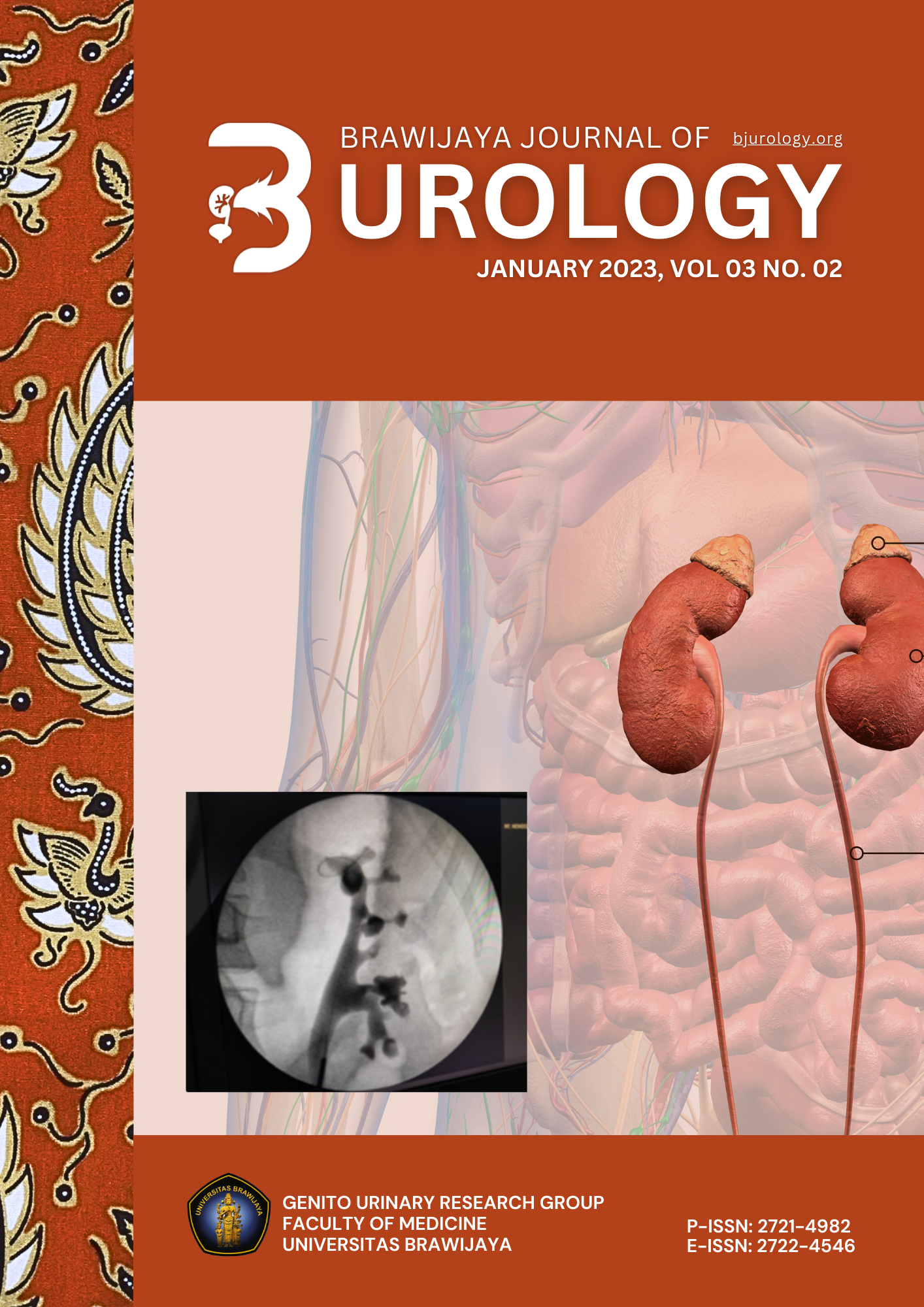Intrauterine Device in The Bladder: A Rare Case Report
DOI:
https://doi.org/10.11594/bjurology.2023.003.02.3Keywords:
bladder stone, cystoscopy, intrauterine device, migrationAbstract
Introduction. Uterine perforation and migration of intrauterine device (IUD) are rare complications but serious. There are several risk factors, such as consistency and thickness of the uterine wall, length of time of insertion, pelvic surgery history, and installer experience and knowledge. The IUD can migrate to the peritoneal cavity and then cause perforation of the rectum, appendix, or stones in the bladder. Although the migration of the IUD to the bladder can be asymptomatic, removing procedure should be taken as soon as possible.
Case. A 74-year-old woman came to the hospital with a complaint of painful urination two years prior to admission. The patient was diagnosed with a recurrent urinary tract infection (rUTI) over the past two years. For the last two months, the patient complained of lower abdominal pain and occasional hematuria. The patient has a 50-year history of IUD insertion. On ultrasound imaging examination, stones were obtained in the bladder by 2.7cm, in cystoscopy procedures confirmed the diagnosis of IUD migration to the bladder with stone formation. Cystolasertripsy was performed to destroy stones and evacuate stones and IUDs from the bladder. The procedure went off without a hitch. After a postoperative evaluation revealed no complications.
Conclusions. Migration of IUD can be found in the bladder and evaluation of the condition of the patient by radiological examination is necessary. An endoscopic approach could be performed to evacuate the IUD from the bladder.












